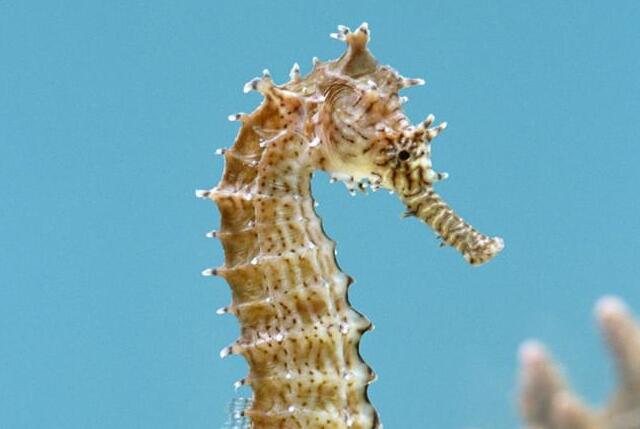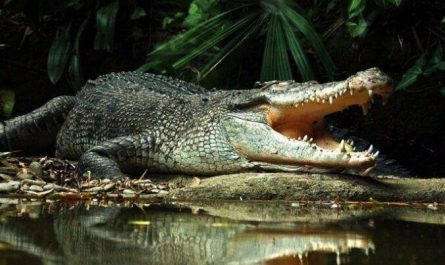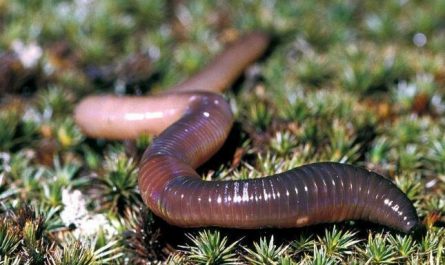The reason why the seahorse is a fish
The hippocampus is a kind of fish, which belongs to the class of bony fishes in taxonomy. It breathes with gills, has vertebrae, dorsal, pectoral, and caudal fins. It is named because its head resembles a horse’s head. The hippocampus has a shape different from ordinary fish. The tail fin is completely degenerated, and the spine has evolved like a monkey tail, which can curl to hook any protruding objects to fix the body position. The small and almost transparent fins can move the hippocampus up, down, left and right, but at a slow speed.
The seahorse is indeed a fish, although it does not look like a fish. It is a strange small marine fish with a body length of about 10 cm. Although the geographical distribution range is very wide, there are not many species. They are scattered and narrowly distributed in coastal waters. Most species mainly appear in the western Atlantic and Indo-Pacific regions. The seahorse is said to be a fish because it does not resemble a horse except for its head horse; it has gills, as well as small dorsal and pectoral fins, which are typical characteristics of fish. If you look closely, you can see that its dorsal fin actually swings very fast, but because it is too small, this swing does not allow it to move quickly in the water.
Of course, the hippocampus has a different shape from ordinary fish. Its tail fin is completely degenerated, and its spine has evolved like a monkey tail, which can curl to hook any protruding objects to fix the body. Although the small, almost transparent fins waved vigorously, they couldn’t make the seahorse move as fast. Fortunately, the hippocampus has a good mimicry function. According to the characteristics of the environment, it can disguise itself as coral or seaweed by virtue of its body color camouflage and hardened leather-like skin to avoid attacks from predators.
The main reason for classifying the seahorse as a fish is that its most basic living characteristics are consistent with fish. It lives in the water for life, relies on gills to breathe, relies on fins to swim, and has a spine composed of vertebrae. These characteristics are destined to be a member of the fish family. Even if it has a “horsehead”, it cannot change its identity.
The morphological characteristics of the hippocampus
The hippocampus is flat head, with 2 nostrils on each side of the head, the head is bent at a right angle to the body, and the fish body
The thick side is flat, completely encased in the bone ring; the mouth is a pointed tube, the mouth cannot be opened and closed, so it can only suck small animals in the water as food, and the eyes can be rotated up and down, left and right or back and forth respectively; chest and abdomen are convex Out, the trunk is composed of 10-12 bone rings, generally about 15-30 cm in length; the tail is slender and quadrangular, and the tail end is thin and can be curled, often curled; the head is curved, and the trunk The part forms a large obtuse or right angle, with a protruding crown at the top and small spines at the crown end; the snout is tubular; the mouth is small and the end; the gill hole is small; the whole body is completely covered by membranous flakes, and there is a spineless dorsal fin without pelvic and caudal fins . The dorsal fin is located between the trunk and the tail; the anal fin is short; the pectoral fin is well developed; there is no caudal fin; its fins are not easy to see with the naked eye.
But with high-speed photography, pay attention to observation, you can see the spines in motion. These thorns can move back and forth seventy times in one second. According to the wave propagating from the end of the dorsal fin to the other end, the seahorse can ride this wave and move freely back and forth or up and down. The male fish has a childcare sac on the ventral side of the tail, in which the eggs are laid for hatching, and can reproduce 2-3 generations a year.
Life habits of the hippocampus
activity
The hippocampus prefers to live in the subtidal sea area where algae clumps or sea leek thrive due to its mimic adaptation characteristics and special habits. Sex is very lazy, often with curled tails entangled on the stems of seaweeds, sometimes hanging upside down on floating seaweeds or other objects, drifting with the flow. Even if you leave the entanglement temporarily for food or other reasons, you will find other objects attached to it after swimming a certain distance. The swimming posture of the seahorse is very graceful. The fish body stands upright in the water, completely relying on the high-frequency wave-like swings of the dorsal and pectoral fins (10 times per second) and swimming slowly (only 1 to 3 meters per minute). The activities of the hippocampus are generally during the day (morning and afternoon), and at night it is static. When the water quality deteriorates, the seahorse is lacking in oxygen, or is attacked by enemies, it often makes a gurgling sound due to the contraction of the pharyngeal muscles, which sends a “help” signal to the breeder, but it also makes a sound when eating food on the water surface. the difference.
prey
Among fish, the seahorse has a uniquely curved neck, and a long snout head, which looks similar to a horse. The overall shape of the seahorse, coupled with the absence of a tail fin, makes them the slowest swimmers on the planet. They don’t swim fast, they usually just like seaweed, tied to the bottom of the sea with a curly tail.
Because all marine creatures like to eat copepods, they are extremely sensitive to water ripples caused by the approach of predators. Once a copepod detects the approach of an enemy, it can swim more than 500 times its length per second. In contrast, the cheetahs, which are known for their fast running speeds, travel at only 30 times their length per second.
But the seahorse. The hippocampus must use the bow-shaped neck as a spring to twist the head forward to catch prey, which also limits their effective distance to catch food, which is only equal to the length of the neck, which is 0.1 cm. However, the seahorse can use the special shape of the head to quietly approach the prey, and then capture it, and the success rate exceeds 90%. The seahorse’s mouth is located at the end of the long snout. When moving towards the prey, the water lines around the snout hardly move, so it can sneak close to the other side and successfully prey.






